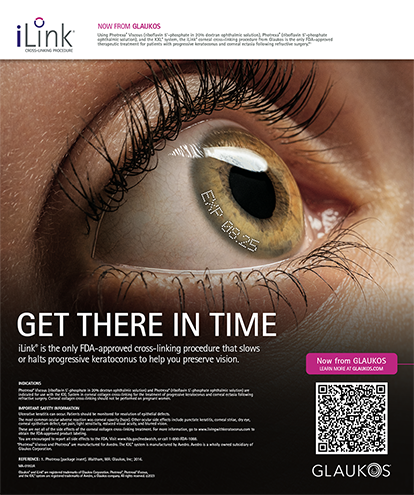Premium IOLs have been a tremendous addition to the armamentarium of the ophthalmologists in the US Air Force. We can now provide a full range of vision to our patients in the military health system. The tremendous potential for this technology is fully realized when the selection of patients and their management are optimized.
We have the benefit of being able to offer to our patients any of the currently available technologies: accommodating, pseudoaccommodating, diffractive, refractive, and toric IOLs. Having a wide selection enables us to tailor the technology to the patient’s visual needs, and patients’ selection is key when considering the options. In general, we do not implant diffractive technology-based IOLs in patients who have retinal pathology (eg, epiretinal membranes, macular drusen or retinal pigment epithelial changes, glaucoma, irregular astigmatism, or other pathology).
PATIENTS’ NEEDS
Another factor is the patient’s occupation. For example, Air Force aviators are not allowed to receive refractive, diffractive, or chromophore-containing IOLs. Great care must be taken to ensure that a full occupational history is gathered along with a determination of the patient’s visual needs before considering a premium IOL. An important aspect is what effect premium lenses have on the ability of men and women in uniform to fight and survive at night and in low-contrast environments. Because the importance of light discipline (ie, not using light when reading maps, navigating, etc.) can determine who survives combat, these considerations are paramount when deciding what lens technology to offer to patients.
I find the use of a questionnaire, similar to the Dell index (available at www.crstoday.com/pages/dellindex.doc), is exceptionally helpful in determining the visual needs of potential candidates for premium lenses. In addition, retinal optical coherence tomography is useful when I am trying to determine if a retinal finding may be significant. Corneal imaging (topography, etc.) is also important during the preoperative evaluation, as is excellent biometry. The ability to hit the target refraction postoperatively is one of the crucial factors that determine success. To ensure excellence in biometry and postoperative outcomes, meticulous attention to the ocular surface’s rehabilitation and maintenance is necessary. Treating dry eye disease and quieting mild blepharitis preoperatively will assist the surgeon and the patient in reaching high levels of satisfaction.
MANAGING EXPECTATIONS
Managing patients’ expectations directly affects their level of satisfaction. Each lens technology has advantages and disadvantages. The ability of the surgeon to explain these clearly to the patient—and the patient’s ability to understand the complex concepts of glare, halos, and contrast acuity—can greatly affect his or her impression of surgical success.
The premium IOL Web sites that patients read advertise the technology’s ability to allow them to see well at all distances. When we are counseling our patients, it is therefore important to discuss the idea of spectacle independence. It is also essential to use realistic scenarios to explain when the patient may experience a degradation of visual performance and to provide him or her with coping techniques to maximize his or her satisfaction with the lenses. For example, those of us who perform laser vision correction with surgical monovision know that having glasses on hand to assist with night driving or driving in unfamiliar places increases a patient’s satisfaction with the procedure—if the surgeon prepared the patient preoperatively. That same type of education can increase patients’ satisfaction when we suggest they use a pair of reading glasses for prolonged near work or glasses for prolonged Internet surfing or database management and e-mail. Thankfully, many patients find those aids unnecessary after premium IOL implantation, but the conversation is much more difficult if delayed until postoperative problems arise. In addition, the expectation of some visual phenomena postoperatively like mild halos at night should be discussed with patients prior to surgery. A well-prepared patient will understand these phenomena and will not be surprised or bothered by their appearance postoperatively.
CONCLUSION
The keys to success include important components of patients’ selection and management. The experience of the US Air Force provides a unique perspective on the use of premium IOL technology and offers pearls for the successful implementation of this promising technology in day-to-day practice.
The views expressed in this article are those of Dr. Reilly and do not represent the official views of the Department of Defense, Department of the Air Force, or Wilford Hall Air Force Medical Center.
Lt. Col. Charles “Chaz” D. Reilly, MD, is a consultant to the US Air Force SG for Refractive Surgery, chair of the Department of Ophthalmology, and chief of cornea and external disease and refractive surgery at the 59th Medical Wing, Lackland Air Force Base, San Antonio, Texas. Dr. Reilly may be reached at (210) 292-2010; charles.reilly@us.af.mil.


